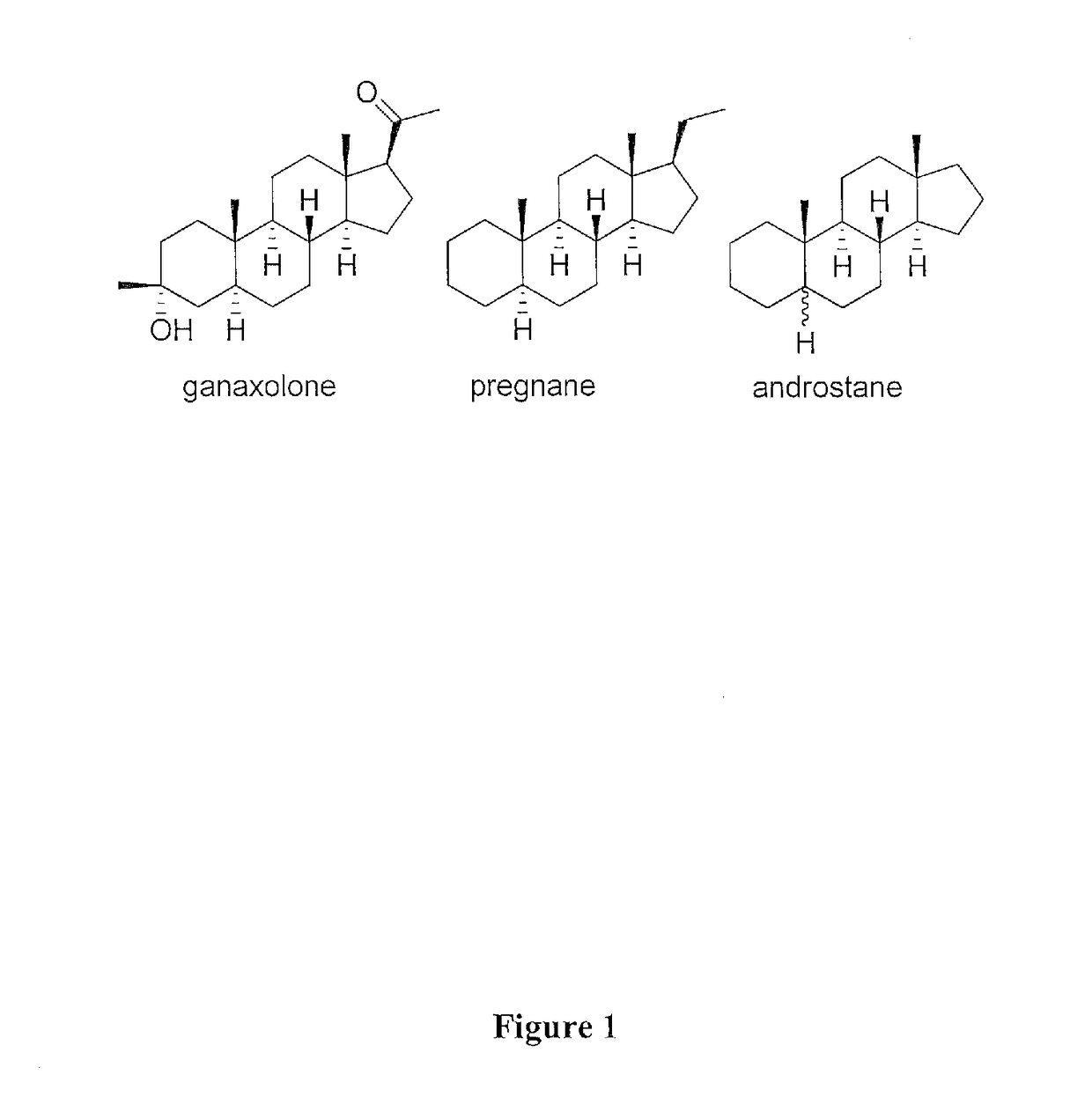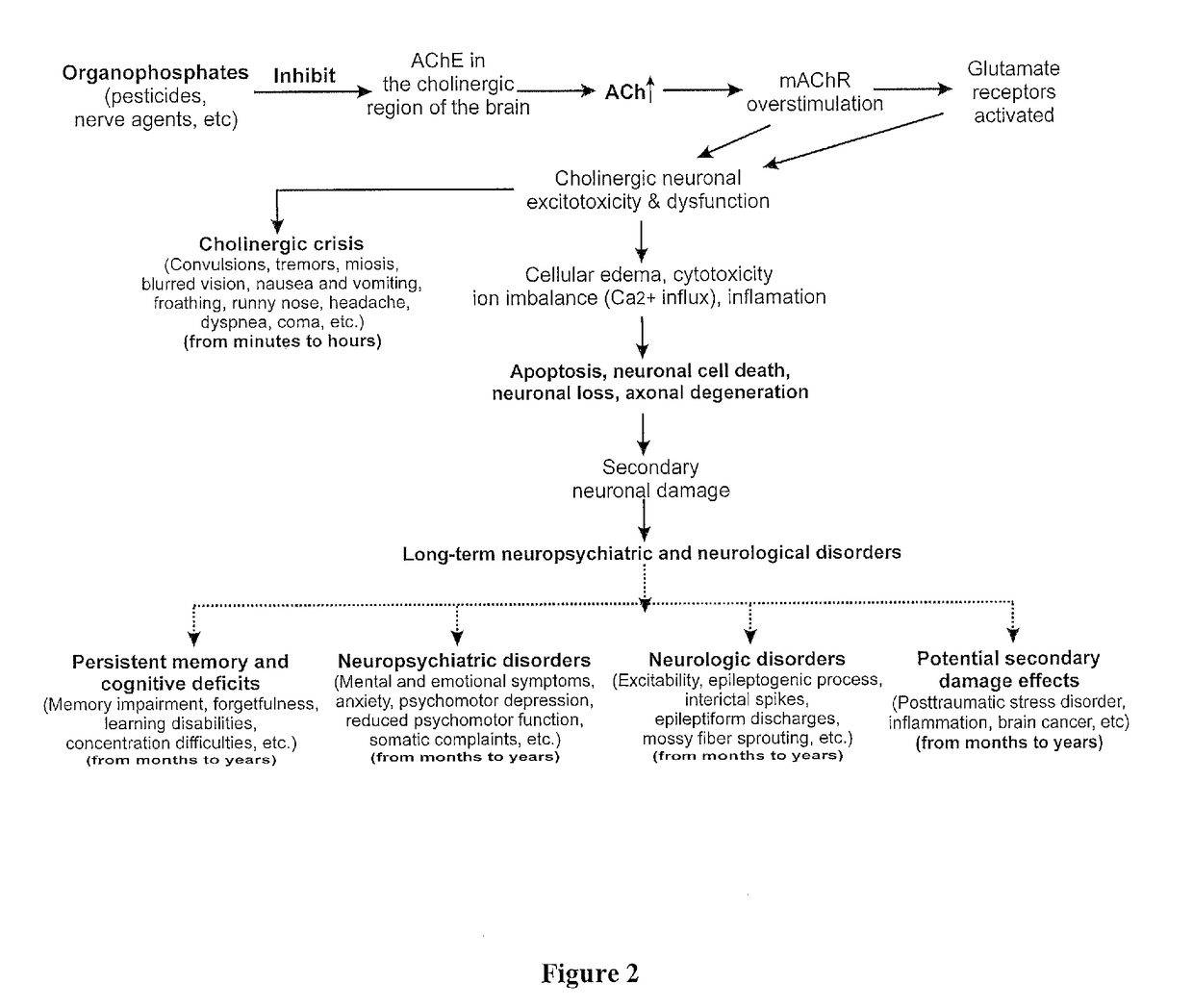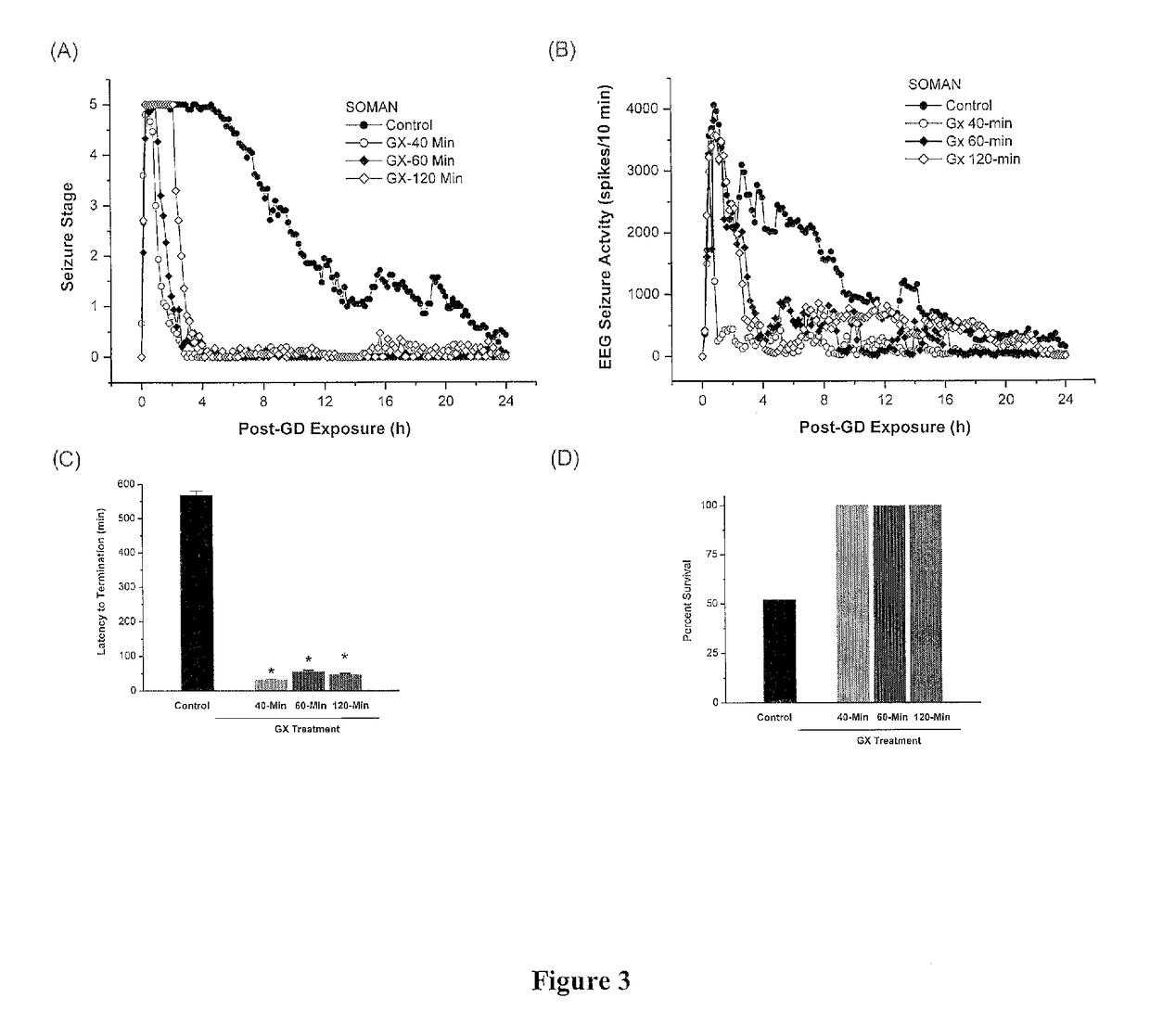Method of treating organophosphate intoxication
a technology of organophosphate and intoxication, which is applied in the field of organophosphate intoxication, can solve the problems of adversely affecting the human nervous system and urban children are also at risk, and achieve the effects of preventing subsequent neuronal injury and long-term neuropsychiatry deficit, and reducing the risk of intoxication
- Summary
- Abstract
- Description
- Claims
- Application Information
AI Technical Summary
Benefits of technology
Problems solved by technology
Method used
Image
Examples
example 1
Neurosteroid Inhibition of Organophosphate Nerve Agent Intoxication
[0119]This example demonstrates that ganaxolone treatment terminates the nerve agent soman (GD)-induced organophosphate intoxication manifestations when given at 40-min, 60-min or 120-min after exposure in rats.
[0120]Methods: The nerve agent studies were conducted as per the established MRICD protocol in rat models. Apland et al. “Higher susceptibility of the ventral versus the dorsal hippocampus and the posteroventral versus anterodorsal amygdala to soman-induced neuropathology”Neurotoxicology 31 (5):485-492 (2010). Rats implanted with EEG recording electrodes were exposed to soman (154 μk / kg, 1.4×LD50) by a single subcutaneous injection, as per the USMRICD protocol. The peripheral cholinesterase reactivator HI-6 (125 mg / kg, i.p.) was given 30-min prior to soman to increase the survival rate. Within 1 min of soman exposure, all rats received atropine methylnitrate (2 mg / kg, i.m.) to minimize peripheral toxic effects...
example 2
Neurosteroid Inhibition of Organophosphate Nerve Agent-induced Neuronal Injury Neurodegeneration, and Neuroinflammation
[0122]The example demonstrates that ganaxolone treatment protects against the nerve agent soman (GD)-induced organophosphate intoxication brain injury and neurodegeneration when given at 40-min, 60-min or 120-min after exposure in rats.
[0123]Methods: The neuroprotectant efficacy of ganaxolone treatment was assessed by an immunohistochemical staining and quantitative analysis of brain sections using four specific markers; (a) neuronal injury (FJB); (b) principal neuronal loss (NeuN); (c) interneuron loss (PV); and (d) neuroinflammation (astrocytic response by GFAP) in key brain regions including the hippocampus, amygdala, cortex, and other areas. Quantitative histology studies were utilized for characterization of the time-dependent protective ability of ganaxolone (10 mg / kg, im) against GD-induced neuronal injury, neuronal cell death, and neurodegeneration. (i) Neur...
example 3
Inhibition of the Nerve Agent Soman Intoxication by a Variety of Neurosteroids
[0125]This example demonstrates that treatment with a variety of neurosteroids (allopregnanolone, THDOC, alfaxolone and androstanediol) terminates the nerve agent soman (GD)-induced organophosphate intoxication manifestations when given at 40-min after exposure in rats.
[0126]Methods: The nerve agent studies were conducted as per the Method described in Example 1.
[0127]Results: The neurosteroid allopregnanolone (10 mg / kg, im), THDOC (10 mg / kg, im), alfaxolone (10 mg / kg, im) or androstanediol (100 mg / kg, im) was given to rats intramuscularly (im) at 40 min after soman administration. The data showed that test neurosteroids effectively controlled electrographic and behavioral activity within 40 to 60 min after treatment with very little seizure recurrences. The ability of these four test neurosteroids is comparable to that of ganaxolone (Example 1). Thus, neurosteroids that are structural analogs or bear simi...
PUM
 Login to View More
Login to View More Abstract
Description
Claims
Application Information
 Login to View More
Login to View More - R&D
- Intellectual Property
- Life Sciences
- Materials
- Tech Scout
- Unparalleled Data Quality
- Higher Quality Content
- 60% Fewer Hallucinations
Browse by: Latest US Patents, China's latest patents, Technical Efficacy Thesaurus, Application Domain, Technology Topic, Popular Technical Reports.
© 2025 PatSnap. All rights reserved.Legal|Privacy policy|Modern Slavery Act Transparency Statement|Sitemap|About US| Contact US: help@patsnap.com



